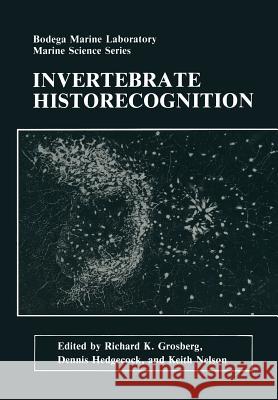Invertebrate Historecognition » książka
Invertebrate Historecognition
ISBN-13: 9781461283119 / Angielski / Miękka / 2011 / 192 str.
Historecognition, broadly defined, spans the processes responsible for the regulation of the genetic integrity of self in the face of conspecific (allogeneic) and heterospecific (xenogeneic) nonself. The existence of precise historecognition systems in the invertebrates can be traced back to Bancroft's discovery in 1903 of, strain specific regulation of colony fusion in the compound ascidian Botryllus schlosseri, and Wilson's report in 1907 of species-specific sponge re-aggregation. Despite this provocative history, invertebrate historecognition remained largely unexplored for over half a century, while studies of vertebrate immune systems prospered. Then, in the 1970's, interest in invertebrate his tore cognition grew once again, this time cast largely in terms of understanding the mechanisms and evolutionary history of vertebrate immunity. From our current understanding of vertebrate immunity and invertebrate historecognition, three generalizations about their relationships can be drawn. First, despite substantial knowledge about the genetics and molecular biology of cell recognition in the context of vertebrate immunity and to a lesser extent of invertebrate historecognition, the evolutionary relationships between invertebrate self/nonself recognition and vertebrate immune systems remain obscure. Second, although vertebrate allograft recognition is of dubious functional significance itself (because intergenotypic cellular contacts are unusual, except during fertilization and pregnancy), natural allografts occur frequently as sedentary invertebrates grow and compete for living space. It is now known that the operation of invertebrate his tore cognition systems can profoundly affect the outcomes of competitive interactions by mediating allogeneic aggressive behavior and somatic fusion."











